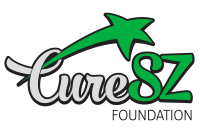
Dr. Craig Chepke, Psiquiatra de consultório particular e Professor assistente adjunto de Psiquiatria, Escola de Medicina da Universidade da Carolina do Norte, Membro do Conselho da CURESZ
A discinesia tardia (DT) é uma síndrome neurológica de início tardio que pode ocorrer como efeito colateral do uso prolongado de medicamentos antipsicóticos. As pessoas que desenvolvem DT podem ter movimentos involuntários repetitivos que geralmente são lentos e contorcidos, ou de natureza dançante. Os movimentos ocorrem mais comumente nos músculos da face, boca e língua, mas também podem aparecer nos braços, pernas ou tronco. As estimativas da frequência de DT diferem, mas variam de 7%-30% de pessoas que tomam antipsicóticos por um período prolongado.1 O tempo de exposição necessário para desenvolver DT é variável, mas pode ocorrer meses ou mesmo anos após o início do tratamento com um antipsicótico. Uma vez que a TD se manifesta, ela pode se tornar irreversível. Portanto, a detecção precoce e o tratamento da discinesia tardia são críticos.
Sinto-me honrado em fazer parte do CURESZ Painel de especialistas em discinesia tardia, but I haven’t always been adept at diagnosing TD. For years, no one in my current practice seemed to have “obvious” symptoms of TD, so I came to assume that it was more of a historical problem associated with the older first-generation antipsychotics that I rarely prescribe. In 2016, however, I began working with a young man with schizophrenia whose TD was unmistakable. With no FDA-approved medications at the time, the best I could offer was to remove or reduce one of the two antipsychotics he was taking. He and his father wouldn’t consider any change, because that combination was the only thing that had ever worked for him. When his father suddenly passed away months later, his grief inspired me to learn as much as I could about treating TD. I couldn’t give him his father back, but I could at least try to give him the dignity of control over his body.
I studied neurology journals and textbooks for months and realized that I had unconsciously set my bar for diagnosing TD at only the highest severity level. I had inadvertently become blind to detecting mild to moderate TD. Reading the numerous failed clinical trials of medications and supplements for treating TD, I gained an appreciation of the decades of powerlessness clinicians had felt in trying to treat it. It seemed that recognition of TD was gradually overshadowed by increased screening for other potential side effects of antipsychotics, such as blood sugar and cholesterol elevations– perhaps because the latter are problems for which we have long had good treatment options. In 2017, the FDA approved the first two medications for TD, and treating my patient with one of them benefitted him in profound ways I didn’t expect.
Every psychiatric provider trained in an era in which there was little or nothing we could do to address TD, so many didn’t have enough urgency looking for it. Our diagnostic skills withered, and many newer clinicians never established proficiency in the first place. Now that approved treatments exist, the mental health field will eventually enhance its recognition of TD, but if I didn’t have this unique experience when I did, it might have been years before I stepped up my screening. Until every provider makes a thorough examination for TD a standard part of their appointments, I urge everyone taking an antipsychotic, especially anyone experiencing unusual or unexpected movement problems, to be your own advocate and take the lead in discussing tardive dyskinesia treatment with your provider.
Referência: 1. Carbon et al. J Clin Psychiatry 2017;78(3):e264–e278.

